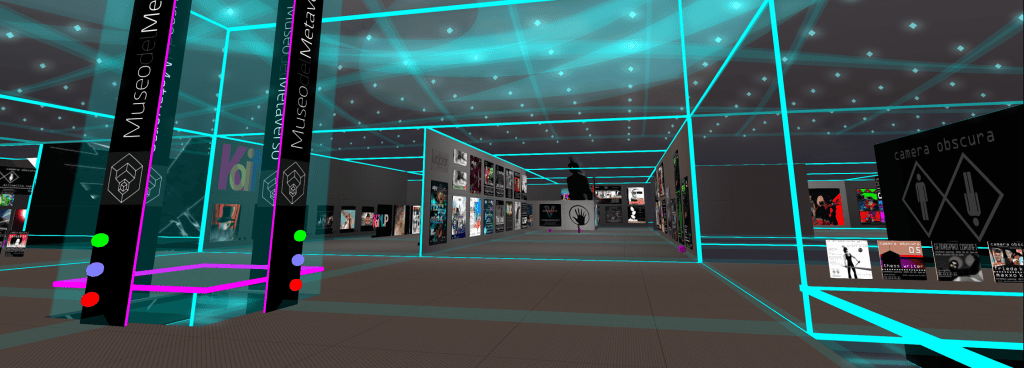
Jamestown, a $13 billion real estate investment and management company, sees the metaverse as a place to explore real buildings. The company’s been investing in metaverse infrastructure and design firms.
What is the metaverse? It’s a new phase of the internet. It integrates virtual and augmented reality, creating a shared environment for people to converse and interact, from wherever they physically are.
Some Real Estate Leaders Have Taken the Plunge. Next Up: Chief Metaverse Officers?
For Jamestown, Web 3.0 — the interactive potential of the internet — empowers people to have immersive experiences with virtual buildings.
Patrick Sisson of Bisnow thinks the metaverse makes perfect sense for the investment property sector:
Websites and brand identities for buildings aren’t new, and it is clear communities can coalesce around apps and social media, as well as services like Hello Alfred, the app-based personal assistant for renters.
Jamestown’s president, Michael Phillips, is known for adaptive reuse projects in urban settings. Think Chelsea Market in New York City, or Industry City in Brooklyn. Phillips is also the visionary behind Ponce City Market in Atlanta and San Fran’s Ghirardelli Square, and a member of the Board of Governors for the Urban Land Institute. So it’s worth taking a listen when Phillips offers an endorsement of the metaverse: “I think this is going to be ubiquitous in the culture of real estate in 10 years.”
And Kunal Lunawat, who co-founded the property tech fund Agya Ventures, predicts: “I don’t think it’ll be weird in five years for retail and luxury condo developers to have chief metaverse officers.”
People at Real Estate Giant CBRE Actually Work in the Metaverse.
With “hybrid” lifestyles still evolving, the Texas-based real estate company CBRE thinks experimenting with the tech trend is just good business policy. The company has even established a virtual office for interviews, learning, and meetings. It’s a 3-D replica of a real-life CBRE office, with vistas of the City of Dallas. Inside, employees from anywhere in the world can interact, write on virtual whiteboards, and refresh themselves with virtual beverages.
Sandeep Davé, chief digital and technology officer of CBRE Group, says it augments real-life collaborations.
Davé is looking at other uses for virtual places too, such as virtual building maintenance plans, or virtual city tours for clients, where people could be beamed up, seamlessly, from one place to the next. This could make driving less important, and solve shortages of engineers, by bringing them in remotely.
Some might say CBRE is overthinking hybrid tech. Others claim that Facebook (now Meta) spends a fortune on the metaverse with little to show for it.
Still others see strong potential. Nishant Batra, Nokia’s chief strategy and technology officer, told The Dallas Morning News that metaverse tech could be a more popular mode of communication than smartphones in just ten years. And about the metaverse-averse naysayers, Phillips, the Jamestown president, quips: “It’s like saying I don’t need an iPhone; I have a flip phone.”
Fidelity’s Gone to Web 3.0 to Attract Under-35 Investors.
Fidelity Investments offers a fund stuffed with metaverse-oriented companies. Fidelity’s short videos welcome viewers into the Decentraland metaverse, where it maintains its multi-floor, 3-D Fidelity Stack building. There, explorers collect virtual swag while learning about stocks and funds as they climb through the building.
So, what companies did Fidelity pick for its Metaverse Index? The top five holdings at this time are Tencent, Alphabet (Google), Apple, Nintendo, and Adobe. (Zuckerberg’s Meta is sixth.)
In the final week of 2022, lawyer Mike Kondoudis showed a series of Fidelity’s Web 3.0 trademark applications. These cover a range of metaverse concepts. The company is seeking millions of under-35 investors, by meeting them where they’re looking.
Fidelity is not the only big financial company with designs on Web 3.0. JP Morgan Chase has built a lounge in Decentraland to promote its blockchain-based Onyx payment system. HSBC’s Stadium is in the metaverse, too — specifically, in The Sandbox.
These financial powerhouses are already on Facebook, Twitter, and other social media sites. The next standout trend is all about meeting the young and the tech-savvy at Web 3.0.
Supporting References
Nitish Pahwa for Slate.com: Future Tense – The Often Maddening, Always Surreal Experience of Work Meetings in VR (Jan. 17, 2023).
Mitchell Parton, residential real estate reporter for The Dallas Morning News: CBRE Built an Office in the Metaverse, Where Nobody Will Have a Desk (Nov. 26, 2022).
Shalini Nagarajan for Blockworks: Fidelity Trademarks Hint at Big Banks Vying for Metaverse Customers (Dec. 27, 2022).
Michael Bürgi for Digiday.com: Why Fidelity Is Hiking Metaverse Position in Bid for Young Investors Who May, or May Not, Be There (Apr. 22, 2022).
Patrick Sisson for Bisnow National: Metaverse Real Estate Trailblazers Now Taking The Leap Into The Great Beyond (Apr. 26, 2022).
Kate Birch for Business Chief: PwC, JP Morgan, Samsung – Buying Land in the Metaverse (Feb. 19, 2022).
And as linked.
Image credit: Mirabella via Wikimedia Commons; CC by SA 4.0 International.
